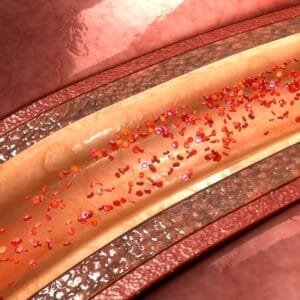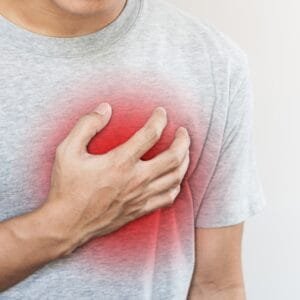Coronary Artery Disease: Symptoms, Causes, and Treatment
Coronary Artery Disease (CAD), often referred to as ischemic heart disease, is the most common type of heart disease worldwide. CAD occurs when the coronary arteries supplying blood to the heart become narrowed or blocked due to plaque buildup. This condition can lead to serious complications, including heart attack and heart failure, if left untreated.



What is Coronary Artery Disease?
Coronary Artery Disease develops when fatty deposits, cholesterol, and other substances (collectively called plaque) build up on the walls of coronary arteries. This condition, known as atherosclerosis, reduces blood flow to the heart, depriving it of oxygen and essential nutrients.
Causes of Coronary Artery Disease
Several factors contribute to the development of CAD:
- High Cholesterol Levels: Excess LDL cholesterol can lead to plaque formation.
- Smoking: Damages blood vessel walls, making them prone to plaque buildup.
- High Blood Pressure: Causes artery walls to thicken and stiffen.
- Diabetes: Increases the risk of arterial damage.
- Sedentary Lifestyle: Lack of exercise leads to poor cardiovascular health.
- Genetic Predisposition: Family history plays a significant role.
Symptoms of Coronary Artery Disease
In its early stages, CAD may not show noticeable symptoms. As the disease progresses, symptoms may include:
- Angina (Chest Pain): A burning, squeezing sensation in the chest, especially during physical activity.
- Shortness of Breath: Due to reduced oxygen supply to the heart.
- Fatigue: Particularly during exertion.
- Heart Attack Symptoms: Severe chest pain, sweating, nausea, and pain radiating to the arms or jaw.
Complications of Coronary Artery Disease
If untreated, CAD can lead to life-threatening complications:
- Heart Attack: Sudden blockage of blood flow due to ruptured plaque.
- Heart Failure: Inability of the heart to pump blood effectively.
- Arrhythmias: Irregular heartbeats caused by damaged heart tissue.
Diagnosis of Coronary Artery Disease
Diagnosing CAD involves various tests and assessments:
- Electrocardiogram (ECG): Detects abnormalities in heart rhythms.
- Stress Testing: Monitors heart activity during exercise.
- Coronary Angiography: Uses X-rays and contrast dye to visualize blockages.
- CT Coronary Angiogram: A non-invasive imaging test for coronary arteries.
Treatment Options for Coronary Artery Disease
Lifestyle Changes
- Healthy Diet: Focus on a heart-healthy diet rich in whole grains, lean proteins, and unsaturated fats.
- Exercise: Engage in moderate aerobic activity for at least 30 minutes, 5 days a week.
- Quit Smoking: Reduces further arterial damage.
- Weight Management: Helps lower blood pressure and cholesterol.
Medications
Doctors may prescribe:
- Statins: Lower cholesterol levels.
- Antiplatelet Agents: Prevent blood clots (e.g., aspirin).
- Beta-Blockers: Lower blood pressure and heart rate.
- ACE Inhibitors: Reduce strain on the heart.
Surgical Interventions
In severe cases, procedures like:
- Angioplasty and Stent Placement: Opens blocked arteries.
- Coronary Artery Bypass Grafting (CABG): Bypasses blocked arteries using healthy vessels from other parts of the body.
Preventing Coronary Artery Disease
Preventing CAD involves adopting a heart-healthy lifestyle:
- Maintain optimal cholesterol and blood pressure levels.
- Exercise regularly.
- Follow a balanced diet low in saturated fats and sugars.
- Avoid smoking and limit alcohol intake.
FAQs about Coronary Artery Disease
1. What is the main cause of Coronary Artery Disease?
The primary cause is atherosclerosis, where plaque builds up in the arteries, restricting blood flow to the heart.
2. Can Coronary Artery Disease be reversed?
While the damage cannot be fully reversed, lifestyle changes and medications can slow progression and improve heart health.
3. How is Coronary Artery Disease treated?
Treatment includes lifestyle modifications, medications, and procedures like angioplasty or bypass surgery.
4. What are the warning signs of a heart attack due to CAD?
Signs include severe chest pain, shortness of breath, nausea, and pain radiating to the arm or jaw.
5. Is CAD hereditary?
Yes, a family history of heart disease increases the risk, especially when combined with other factors like smoking or high cholesterol.
Conclusion
Coronary Artery Disease is a serious but manageable condition. Early detection, lifestyle changes, and medical treatments play a crucial role in improving outcomes. By prioritizing heart health, individuals can significantly reduce their risk of complications and lead healthier lives.
